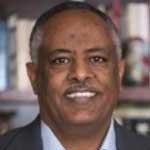
Viewpoints | Jan 27,2024
Nov 30 , 2019
By Yonas Biru (PhD)
If I were Prime Minister Abiy Ahmed, I would publish something similar to this in TheWashington Postor The New York Times.
Recently, the international media has portrayed Ethiopia as a country under siege with a government that is either incapable or lacking resolve to bring order. In most cases, the media focus has been on headlines generating episodic incidents, such as ethnic and religious conflicts.
What the media has failed to provide is context behind the conflicts, the state of the country when the current administration took office, the steps that the administration has taken to bring peace and political reform, and the systemic progress that has been made. Focusing on episodic incidents while ignoring systemic progress paints a distorted image.
Stabilising a country that is deeply polarised along ethnic lines and restive with economic woes amid soaring youth unemployment is a formidable task. The challenge becomes even more formidable when the stabilisation effort must be undertaken concurrently with broad and fundamental reforms.
This administration took office on the heels of a widespread uprising that claimed over a thousand lives. Upwards of 30,000 protesters, opposition leaders, journalists and bloggers were confined to harsh prisons under a state of emergency declaration. The government’s notorious torture chambers had been filled to the brim, leading to residential buildings being converted into torture houses.
Despite the mass arrests and feared torture chambers, opposition forces continued to till the soil for a nationwide rebellion. Ultimately, the government bowed out, leaving behind a nation inflamed with rage, anxious for revenge and mired in despair. This was the hand the administration was dealt when it took office in April 2018.
There are other aggravating factors within the realm of the constitutional and political orders that have made the reform process difficult. Ethiopia is a federalist nation divided into nine ethnically-based autonomous states with near-absolute sovereign powers, special paramilitary forces and “unrestricted right to self-determination up to secession,” as dictated in Article 39 of our Constitution.
Article 39 was intended to provide the nine states an ultimate guarantee for their ethnic rights to self-govern their business as they see fit. The thinking was to inhibit the federal government’s desire to encroach on their rights, fearing the nuclear option of secession.
The unintended consequences of placing unmitigable sovereignty in the ethnocentric state governments are many. By design, the Constitution makes constitutional reform next to impossible. Any reform must be supported by all nine states. One renegade state can stop the nation from moving forward. This has made any attempt for transformational reform a source of fierce contention.
The country is divided into two seemingly irreconcilable camps. This is manifested in the statements of two opposing political leaders who are graduates of American Ivy League universities and returnees from exile. Both enjoy a large following in their respective domains of influence.
One of them believes Article 39 is sacrosanct and the “multinational federalism ingrained in the current Constitution is here to stay. It’s not up for discussion, let alone negotiation.” The other one demands we “abolish the Constitution, dissolve parliament and lead a transitional government by decree… to abolish the ethnic agenda.”
The one who wants to sanction the current Constitution as sacrosanct and opposes the current reform accuses the government of being an agent of Amhara domination. The other who calls for the abolition of the Constitution by decree sees it as an agent of the Oromo political establishment that is bent on establishing an Oromo hegemony.
Intergroup conflicts associated with ethnic identity are emotionally charged and polarised even within the Ivy League graduate elite class. The conflict picks up energy as it percolates down to the restless unemployed youth, often culminating in violence.
The story of the reform journey is one of reconciling such diametrically opposing and deeply entrenched positions and forces.
From day one, the administration’s challenge has been expanding the national political space and encouraging the states and warring factions to be a constructive part of our reconciliation process.
The drive for national reconciliation was started with rapidly cascading reforms. The state of emergency was lifted, all political prisoners were released, high-profile activists and politicians who were on death row were pardoned, one of the most infamous torture chambers was converted into a museum, and exiled dissidents were invited to return home. Soon after, the administration freed the press from government tutelage and communist-style control, expanded the political space for competition and announced a free and fair election for 2020.
The government was cognizant that, as paramount as the free press and social media may be in facilitating political discourse, they can also be destabilizing, empowering destructive forces who are bent on breeding and feeding conflicts. The perils of opening up the political space for competition in a country where ethnic politics were the driving force of all major conflicts and uprisings over the last 40 years was also clear.
As feared and expected, simmering grievances and latent conflicts that were suppressed by force burst into the open at the first ring of the democratic bell. The number of forcefully displaced people, who had reached over a million before this administration took office, increased significantly. Inter-ethnic conflicts led to the deaths of hundreds and the destruction of houses of worship, residential homes, universities and businesses.
Though the deaths and destruction were painful, the government resisted the temptation to revert to the old ways of unleashing the army to establish militarily enforced security and peace. The fresh memory that repressing dissent by force brought the country close to the brink of civil war kept the administration grounded in the belief that peaceful reconciliation is a central pillar for laying the foundations for long lasting peace.
Unfortunately, there were cases where the use of force was imperative to rein in forces that were bent on inciting violence along ethnic and religious lines. In such cases, law enforcement authorities took measured and proportionate actions, restraining the police and military forces at a lower end on the crackdown scale.
Critics, both at home and abroad, fail to appreciate that restraint in relying on force to repress internal dissent and conflicts is not a result of lack of resolve. Rather, it is guided by a deliberate commitment to establish a culture of reconciliation and tolerance.
One of the bedrocks of the decisions was establishing the Ministry of Peace that was inaugurated a little over a year ago. Led by Muferiat Kamil, the Ministry of Peace carries an overarching and expansive mandate, serving both as a rapid response agency to defuse emerging conflicts before they turn deadly and as an anchor institution to build operational systems that foster peaceful reconciliation through dialogue.
Within a year, the Ministry of Peace has registered notable results. A large majority of the forcefully displaced people have returned to their homes. Just recently, several ethnocentric parties that did not see eye to eye in the past came to the table and committed themselves to engage in constructive dialogue. Their leaders deserve to be thanked and encouraged to stay the course.
Further, as part of the overall reform to eradicate disparate identity-based conflicts, the Ethiopian Prosperity Party (EPP) was established, merging the coalition of the ethnic-based governing parties and unifying them into a national party and adding other ethic-based parties.
Moving forward, this will open the door for the establishment of a national consensus to integrate, reconcile and align national and ethnic interests with the aim of enhancing national cohesion and reducing tensions.
The challenge is negotiating the tensions between the use of force that is necessary to control violent conflicts and the need to rely on citizen diplomacy through interactive processes to defuse tensions and reconcile competing interests.
The challenge arises from the fact that the use of force can undermine the effort to build a culture of peaceful reconciliation, and relying solely on peaceful reconciliation can run the risk of giving destructive forces a free hand. The Ministry of Peace is working closely with the people, military forces and the police simultaneously to balance the competing needs.
The Ministry has made significant strides in increasing the participation of elders and community leaders in the peace process. Ultimately, the country’s collective journey and destiny need to be charted not by “we, the elites of Ethiopia” or “we, the government of Ethiopia”, but by “we, the people of Ethiopia.”
PUBLISHED ON
Nov 30,2019 [ VOL
20 , NO
1022]


Viewpoints | Jan 27,2024

Fortune News | Dec 11,2021

Viewpoints | Apr 26,2025

Fortune News | May 11,2019

Radar | Jul 18,2020

My Opinion | 131584 Views | Aug 14,2021

My Opinion | 127940 Views | Aug 21,2021

My Opinion | 125915 Views | Sep 10,2021

My Opinion | 123539 Views | Aug 07,2021

Dec 22 , 2024 . By TIZITA SHEWAFERAW
Charged with transforming colossal state-owned enterprises into modern and competitiv...

Aug 18 , 2024 . By AKSAH ITALO
Although predictable Yonas Zerihun's job in the ride-hailing service is not immune to...

Jul 28 , 2024 . By TIZITA SHEWAFERAW
Unhabitual, perhaps too many, Samuel Gebreyohannes, 38, used to occasionally enjoy a couple of beers at breakfast. However, he recently swit...

Jul 13 , 2024 . By AKSAH ITALO
Investors who rely on tractors, trucks, and field vehicles for commuting, transporting commodities, and f...

Jun 28 , 2025
Meseret Damtie, the assertive auditor general, has never been shy about naming names...

Jun 21 , 2025
A well-worn adage says, “Budget is not destiny, but it is direction.” Examining t...

Jun 14 , 2025
Yet again, the Horn of Africa is bracing for trouble. A region already frayed by wars...

Jun 7 , 2025
Few promises shine brighter in Addis Abeba than the pledge of a roof for every family...

Jun 29 , 2025
Addis Abeba's first rains have coincided with a sweeping rise in private school tuition, prompting the city's education...

Jun 29 , 2025 . By BEZAWIT HULUAGER
Central Bank Governor Mamo Mihretu claimed a bold reconfiguration of monetary policy...

Jun 29 , 2025 . By BEZAWIT HULUAGER
The federal government is betting on a sweeping overhaul of the driver licensing regi...

Jun 29 , 2025 . By NAHOM AYELE
Gadaa Bank has listed 1.2 million shares on the Ethiopian Securities Exchange (ESX),...